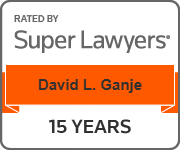Municipal Landfills in North Dakota
The operation of a municipal landfill, also known as a solid waste facility, involves legal risk, such as damage caused from a landfill leaking or by landfill contamination of groundwater. Modern landfills are created with liners and other collection systems designed to prevent contamination of the ground, groundwater and the air. Despite good practices, in 2003 the U.S. Geological Survey (citing the EPA) opined that “all landfills eventually will leak into the environment.”
In North Dakota municipalities are required, in the event of a spill or leak, to show their financial ability to take corrective action, but only after the event has already occurred. North Dakota does not require municipal landfills to maintain environmental or pollution liability insurance. Consider a landfill just west of Watford City, which was recently found storing thousands of pounds of illegal radioactive material. The costs to clean up a landfill leak can be beyond the financial capability of a municipality if adequate preparations are not made. An operating landfill is not the only party who might be on the hook to pay for leaks. By way of illustration, Grand Forks has promised to indemnify the operator of their landfill from any and all claims, suits or causes of action that arise from the landfill.
To put this liability issue in financial perspective, the cost to clean up a leaking 150-acre landfill next to a drinking water supply in Burnsville, Minn., was recently estimated by the state at $64 million. These clean up events are the type addressed by landfill pollution insurance, but few municipalities seem inclined to carry the insurance. I am not aware of any North Dakota municipal landfill that carries pollution liability insurance. This is akin to riding a motorcycle without a helmet. Landfills in the state are, in many cases, owned and run by cities and counties. Understand that municipal landfills are dutiful in complying with state and federal environmental regulations. State regulators and municipalities are following relevant statutes and rules. That is not the issue. The challenge is the risk of pollution liability, also called environmental liability – no small matter in today’s world, with costs that can reach into the millions.
Municipalities in North Dakota are not necessarily alone when a leak occurs. North Dakota maintains the Municipal Waste Landfill Release Compensation Fund, which would reimburse municipalities for reasonable corrective costs, including labor, testing, machinery, and consulting fees. However, the owner or operator must pay the first $100,000 for corrective action. Moreover, the Fund will not protect owners and operators who are negligent, or who caused the leak through misconduct, at the sole determination of the State. The Fund will not even reimburse for costs incurred through bodily injury or property damage. It is not a catch-all for landfill environmental liability.
If the Municipal Waste Landfill Release Compensation Fund cannot handle the issue, the release might be enough to trigger the State Disaster Relief Fund, which is there to help deal with a variety of issues, including widespread and severe water or air contamination. A problem on the scale experienced in Burnsville could be met with this State fund to help. A $64 million cleanup would however reduce the Disaster Relief Fund to near-empty, as North Dakota has just over $70 million currently in the fund.
Unfortunately for municipalities, when a serious landfill leak that cannot be handled at the city level occurs, the Environmental Protection Agency may become involved, triggering a Federal cleanup. Once the EPA gets involved, costs can skyrocket for everyone, and the EPA will bring suit against every party, including a negligent municipality, involved in the leak to pay for the cleanup costs. Facing off against the EPA in a million-dollar suit is the last place a municipality wants to be. It would be better to be able to handle landfill leaks with insurance, rather than involving other bureaucratic organizations who will use money inefficiently and then demand repayment.
This fund or ‘security account’ held by the state is not a complete answer, but it is a good start. Compare this with South Dakota which leaves municipalities buck naked to the law. South Dakota leaves municipalities at great legal risk. The South Dakota delegating law states that owners or operators of landfills are forever responsible for any pollution or legal problems caused by stored solid waste. The state has no special fund to deal with this issue. South Dakota’s rules allow a municipality to keep a separate fund (money deposited in a bank account, for example) to protect against the costs of a leaking landfill, or alternatively for coverage of such a leak by purchasing pollution insurance. Nevertheless, to maintain a separate fund large enough to cover a landfill leak is beyond the financial capability of municipalities in both states. Brown County, the third largest county in South Dakota, maintains a separate fund in the amount of $240,000. That is not enough money to cover a possible leak. Brown County is one of the municipalities that does not carry landfill pollution liability insurance. This is a problem, especially considering that the Brown County landfill makes a profit for the county. Yet Brown County will not consider pollution liability insurance to protect the landfill.
Just because the North Dakota has some financial support for landfills does not mean that preventative measures should be ignored. Government operated enterprises should not be so callous. The old concept of sovereign immunity (“the king can do no wrong”) is quickly becoming old law. The growing need for landfills is not going away. To the contrary, solid waste is increasing yearly. While North Dakota is more prepared than its neighbor to the south, there are still things that should be done. The State should protect municipal landfills by requiring landfills to hold insurance covering operating pollution events, and municipal landfills should choose to do so whenever possible.





